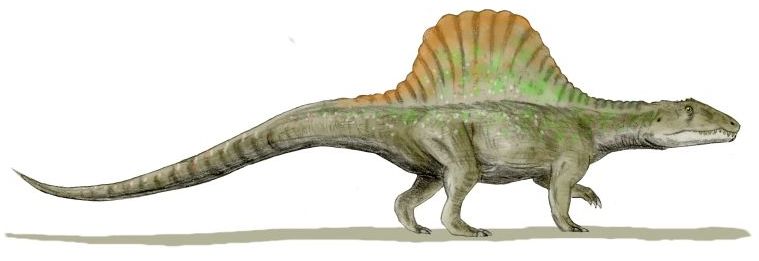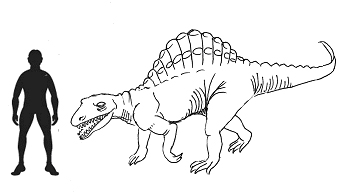[Recent Entries][Archive][Friends][User Info]
| March 1st, 2012 | |
|---|---|
| 06:45 pm [industrialterro] [Link] |
Arizonasaurus Arizonasaurus was a ctenosauriscid archosaur from the Middle Triassic (240 million years ago). Arizonasaurus is found in the Middle Triassic Moenkopi Formation of northern Arizona. A fairly complete skeleton was found in 2002 by Sterling Nesbitt. The taxon has a large sailback formed by elongate neural spines of the vertebrae. The type species, Arizonasaurus babbitti, was named by Samuel Paul Welles in 1947. It superficially resembles the sail-backed synapsids Dimetrodon and Edaphosaurus, which lived millions of years earlier during the Late Pennsylvanian and Permian. Ctenosauriscidae is an extinct family of pseudosuchian archosaurs within the clade Poposauroidea. Ctenosauriscids existed in Africa, Asia, Europe and North America during the Early Triassic to the Middle Triassic period (latest Olenekian to Anisian stages). All species had large "sails" on their backs. Ctenosauriscids are among the earliest archosaurs and represent the first global radiation of the group. Poposauroidea is a clade of rauisuchians. It includes poposaurids, shuvosaurids, and ctenosauriscids, but excludes the large predatory quadrupedal rauisuchians such as rauisuchids and prestosuchids. Although it was first formally defined in 2007, the term has been used for many years. The group has been referred to as Poposauridae by some authors, although this name is often used more narrowly to refer to the family that includes Poposaurus and its close relatives. Rauisuchia is a group of predatory and mostly large (often 4 to 6 meters) Triassic archosaurs. As a clade, Rauisuchia includes these Triassic forms and all crocodylomorphs, which are descendants of Triassic rauisuchians. The group in its traditional sense is paraphyletic, because it does not include crocodylomorph descendants. To designate it as an informal group in scientific literature, the name in its traditional sense is often enclosed in quotation marks. Both José Bonaparte and Michael Benton argue that rauisuchians such as Saurosuchus developed an erect stance independently of, and different from that of dinosaurs, by means of having the femur vertical and angling the acetabulum ventrally, rather than having an angled neck or curve in the femur. This has been referred to as the pillar-erect posture. The erect gait indicates that these animals were clearly active, agile predators, with locomotor superiority over the kannemeyeriid dicynodonts and abundant rhynchosaurs on which they fed. They were successful animals, the largest with skulls up to a meter or more in length, and continued right until the end of the Triassic, when, along with many other large archosaurs, they were killed off by the end Triassic extinction event. With their demise, theropod dinosaurs were able to emerge as the sole large terrestrial predators. Meat-eating dinosaur footprints suddenly increase in size at the start of the Jurassic, when rauisuchians are absent.
Размеры тела в сравнении с человеком:
Tags: Вымершие рептилии, Триас, архозавроморфы, архозавры, диапсиды, круротарзы, ктенозаврисциды, попозавройды, равизухии |




